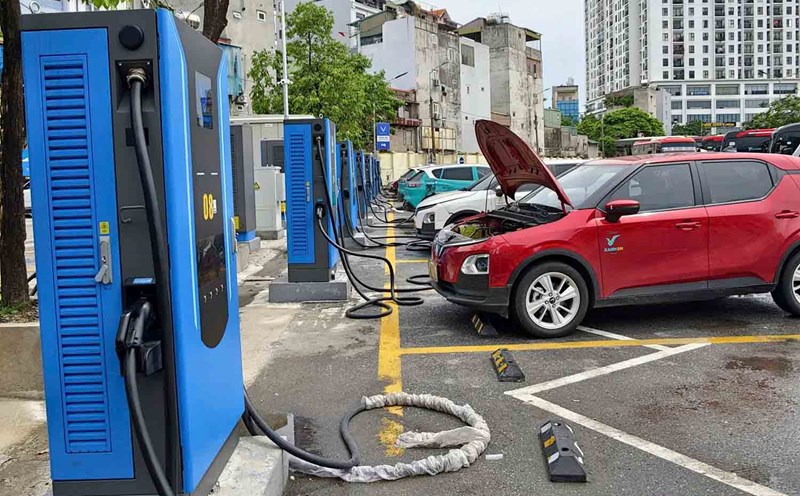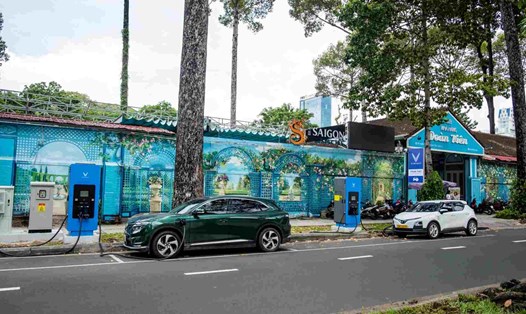National Assembly deputies propose to supplement regulations on charging station planning in urban areas
At the discussion session on the draft Law on Construction (amended), National Assembly delegate Nguyen Phi Thuong (Hanoi Delegation) emphasized that air pollution is an urgent problem, especially in large cities like Hanoi. To greene and electrify means of transport, infrastructure must be invested in proportion.
According to the Delegate, Vietnam is entering the stage of converting vehicles from gasoline to electricity, but if the charging infrastructure is not planned and legalized, this process will face many barriers.
Therefore, Mr. Nguyen Phi Thuong suggested that the draft law should add regulations on urban areas and residential areas where new electric vehicle charging stations and pillars are installed. At the same time, promptly issue unified national standards on the construction and installation of charging stations nationwide. According to the delegate, only when these contents are legalized, will the transition to green transportation be truly feasible and synchronous.
According to information from the Hanoi Department of Construction, the city currently has about 1,000 charging stations, most of which are concentrated in the central area. A representative of the Hanoi Department of Construction said that the city is reviewing the overall location of the wharf in Ring Road 1 to install more charging stations, and at the same time developing common standards to avoid the situation of broken installation.
Looking at the world, legalizing charging station infrastructure has become an inevitable trend. Since 2014, the European Union has issued a directive on developing infrastructure for alternative fuels, paving the way for a series of policies forcing new buildings to have charging stations. In the UK, from 2021, all newly built or renovated projects such as supermarkets and offices must have parking spaces with charging stations. Germany also requires new apartment buildings with 6 or more apartments to have charging infrastructure, with a minimum of 20% of the parking lot area.
Planning urban charging stations should be a mandatory regulation instead of just encouraging
In Hanoi, the trend of using electric vehicles is becoming increasingly clear. Mr. Nguyen Van Luu (Xuan Dinh Ward) shared that the urban area where he lives has a common charging station for VinFast motorbikes and electric cars, helping people feel secure in using green cars. I find it much more convenient and safer. The area management board also installed monitoring equipment and a fire safety warning sign. Thanks to early planning, residents are more supportive of electric vehicles, said Mr. Luu.
Ms. Pham Thi Huong (Dich Vong ward) also believes that if every urban area has a charging station, people will use electric vehicles more and more.
In fact, V-Green charging stations are currently covering tens of thousands of locations nationwide. Among the 150,000 charging ports planned to be installed by V-Green, there are many locations in large urban areas to create maximum convenience for users. Experts and users both admit that the appearance of V-Green's charging infrastructure has been helping users confidently switch to green.
However, to create more convenience, experts say that legalizing charging stations in new urban areas is necessary and in line with the trend. Mr. Khuong Kim Tao - former Deputy Chief of Office of the National Traffic Safety Committee - analyzed that the policy of developing electric vehicles is only effective when it is legalized and has mandatory regulations. If it is only for incentives, it will be difficult to create real change. Charging stations need to be considered a mandatory infrastructure in the planning of new urban areas, such as electricity, water, and drainage.
Mr. Nguyen To An - Deputy Director of the Vietnam Register also said that to develop electric vehicles, the entire system must be synchronous. Apartment basements and urban areas need to have standards to build separate charging stations, ensuring safety for electric loads, conductors, sockets, and jackets. Synchronization here is not only the charging place, but also the electricity quality and management system.
Sharing the same view, Mr. Nguyen Dong Phong - Director of the Road Motor Vehicle Emission Testing Center (Vietnam Register) said that when realizing the conversion of gasoline-powered motorbikes to electric vehicles, we need to solve many problems. To solve this problem, the State and authorities at all levels need to have policy tools to support the people.
It can be said that for green transport to develop sustainably, Vietnam needs to soon legalize the mandatory requirement to arrange charging stations in urban planning. This is not only a vehicle-assisted infrastructure, but also a foundation for realizing the goal of reducing emissions, towards green, clean and livable urban areas.











